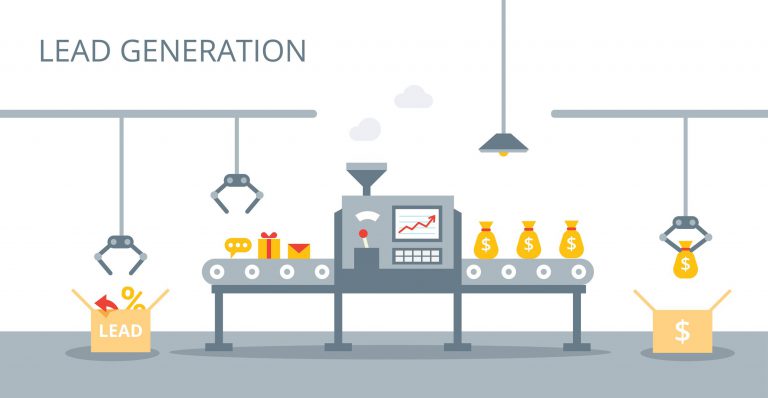There’s something almost magical about the way marketing draws us in these days. It’s gotten to the point where merely thinking about a product or a service means ads for it start appearing in your Facebook feed, search engine results pages, and news sites. The marketing world has gotten really clever with how it reaches new audiences, but enticing them to become customers, and then to become advocates is a whole other kettle of fish.
Potential customers who have a clear need and become enthralled by your brand may convert very quickly, but most will entertain the idea of your product or service, mull it over for weeks, and forget about you. You might be tempted to dismiss the leads who seem uninterested in your brand and its services, but the truth is, you might be missing out on an opportunity if you simply ignore these potential buyers.
Brand awareness plays an important role in your digital marketing strategy, but the real goal—the one that helps you prove ROI—is to move potential buyers down the funnel toward purchase, become loyal, repeat customers, and then tell their friends about your company’s product or service. To that end, we compiled a list of some tried-and-true tactics that will help you reach your performance goals, increase revenue, and demonstrate the ROI of your efforts.
Basics for Nurturing High-Funnel Leads
You can’t master the art of high-funnel lead nurturing if you haven’t tackled the simple parts first. Let’s get back to basics to ensure you’re on the right track.
1. Capture contact information ASAP
There’s not much you can do with a lead if you can’t contact them. Capturing contact information from those who visit your website or click through your content should be your first priority.
“When you’ve captured a marketing qualified lead (MQL) email address, it allows you to nurture a prospect further down the funnel by continuing to market to them with additional content offers like guides, checklists, white papers, and videos,” says Mark Nicholson, vice president of marketing at Nicejob. It’s important that that connection between you and your leads is established and strong so you can sustain that long-term growth.
The only problem with attempting to capture contact info right off the bat is that it’s possible to come across as too salesy to your high-funnel lead. You want to get creative in how you ask for email addresses, so it’s important to offer them something of equal value in exchange for their contact details to further incentivize the exchange. If your customer thinks they’re making an even trade, they’ll be more likely to trust you and move down that sales funnel.
2. Focus on the relationship first
It’s important to develop relationships with your leads, says Meg Brunson, founder and CEO of EIEIO Marketing. “Put a name and a face behind the company. Once they get to know you and like you as a person, they will be more likely to do business with you and your company.”
No one likes feeling swindled into buying something. It’s a good move to show your potential customers that you’re interested in them for more than their money—that you’re listening, and that your company consists of real people who care. You can demonstrate this through direct interaction with your leads, showcasing staff hobbies and interests, posting to social media about your company culture, or demonstrating humor across all your digital platforms.
Humanize your brand in the eyes of your leads, and they’ll be sure to feel more connected to you, and therefore more inclined to make their purchase with you.
3. Teach, teach, teach
Thought leadership marketing is an emerging trend that’s gaining steam throughout the marketing world. Demonstrating expertise in your field allows you to build credibility for your brand; credibility drives trust, and trust drives purchases. Instead of bombarding your leads with promotional content, it’s far more effective to craft your messaging in a way that illustrates your brand’s mastery of a product or service.
Then, when high-funnel leads travel down the funnel and decide to purchase the product or service, it will be a no-brainer that they buy it from you. After all, they already believe in you as an expert! This type of approach will give you a competitive edge, and ensure your customers trust your expertise as they work toward a sale.
4. Provide value and build trust
Regardless of where you go in the world, people are people, and they want to know that they’re not getting scammed or buying something that’s not worthwhile. “The best way to nurture a high-funnel lead is to provide value without any expectation of receiving anything in return,” Brunson says. “As the prospect receives more and more value from you, they will begin to trust the brand and become more likely to move down the funnel.”
How is your brand different from other brands out there? Why should they work with you over your competitors, and why should they stick around—even after that first purchase? Brand reputation is important, and building valuable connections that prioritize the customer is essential. While it might seem obvious, don’t skip this part! Skip the gimmicky sales pitches and the misleading language and opt for honesty and transparency.
Practical and Innovative Ideas for Nurturing High-Funnel Leads
Now let’s break down some of the tried-and-true tactics we heard from folks who are experts at turning high-funnel leads into loyal customers.
1. Offer something for free
Engaging prospective buyers today means competing for dwindling attention spans. You have seven seconds to get your message across and encourage them to notice your product, according to Tribute Media. But, the word “free” often leads to valuable second glances.
Offering something for free takes “adding value” one step even further. Whether you’re actually giving away product samples or you’re tantalizing social media followers with a free guide, brands that believe in themselves enough to give away their expertise demonstrate confidence and competence. It might cost you something on the front end, but if it’s ROI you’re after, experimenting with a free product or service offering will likely lead to long term returns.
2. Personalize the experience
Personalized emails generate up to six times higher revenue per email, according to Hubspot. Most consumers are sick of generic email blasts. No one wants to feel like they’re simply a name on a list of hundreds of other names, and today’s digital world is all about personalization.
Personalizing emails could include using the customer’s name in the email, sending a follow-up email with related content after a lead has engaged with your brand, or sending a reminder email if they happen to abandon their shopping cart. Your goal is to let them know that you see them as an individual and that you’re interested in their interests.
3. Use an automated, email-drip campaign
Drip email campaigns are a fantastic way to provide value without having to address each and every lead individually. “You want to reach out to these high-level funnel leads, but you don’t want to be pushy, so always try to provide content that would be valuable and relevant even if it’s not a service [you] offer,” says Joseph Sloan, marketing and communications coordinator for Advice Media.
The great thing about this day and age is that technology can now do a lot of the work for you. Get set up with an email-marketing software company like Hubspot, MailChimp, or Campaign Monitor, and you’ll be able to get very specific with which emails go to which leads. Once you have the system configured correctly, intentional, personalized emails will drip into a potential buyer’s inbox, and you won’t have to lift a finger to keep working toward that sale.
4. Use retargeting ads
Buyers rarely have linear journeys toward a purchase these days, and retargeting ads can be a helpful way to help coax them along on their trek toward your product.
Retargeting ads are a form of online advertising that are shown to leads who visit your website or are already in your database. They can be pixel-based or list-based, according to Hubspot, so you have some options. Retargeting ads work like this: Regardless of how much time a potential lead spends on your site, they’re served ads touting your products as they navigate across the internet. As your high-funnel lead repeatedly views ads showcasing your brand, it stays top of mind as they move closer and closer to purchase.
It’s All About How You Nurture
Nurturing leads is all about the old adage, “matter and manner matter.” In other words, the substance of the content you share is just as important as the way you share it. While you might be focused on improving sales performance and quickly converting your leads into buyers, you have to take a slightly different approach with high-funnel leads.
It’s important you don’t scare off potential buyers, so concentrate on providing valuable, resourceful content that slowly but surely coaxes high-funnel leads back to your brand. As you gently but persistently cultivate your high-funnel leads, you’ll soon find yourself meeting your business goals and generating a higher ROI.
Lead nurturing is about providing an intuitive next step for people interested in engaging with your brand—well-written calls to action are a great way to do just that. Let us help you make the most out of your CTAs with tips from the pros.




